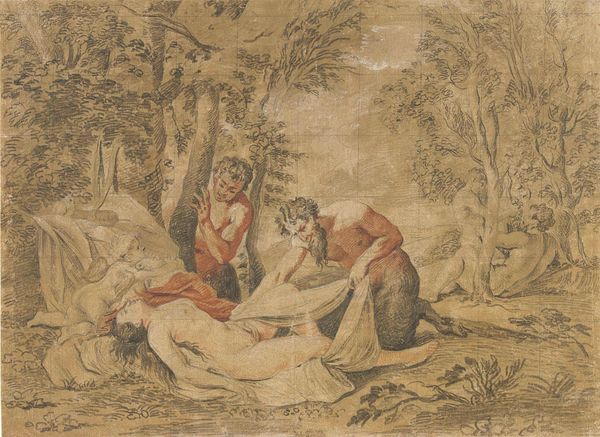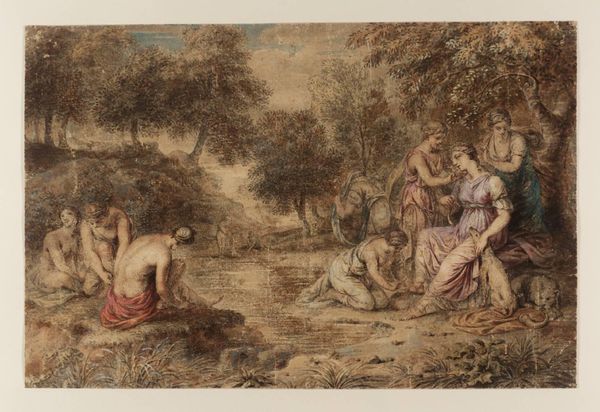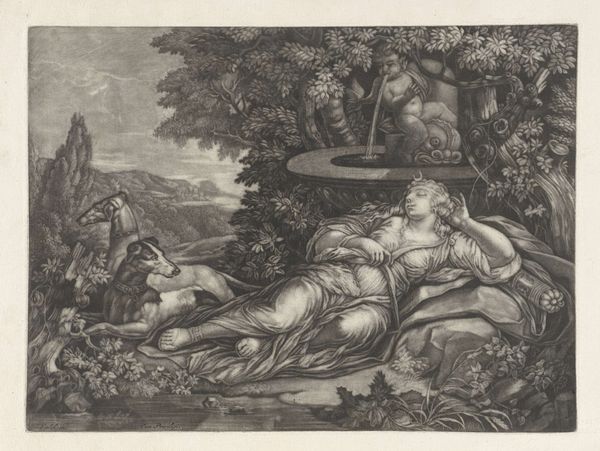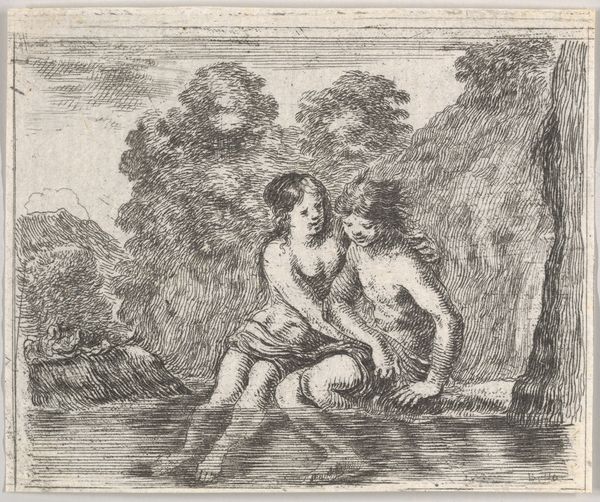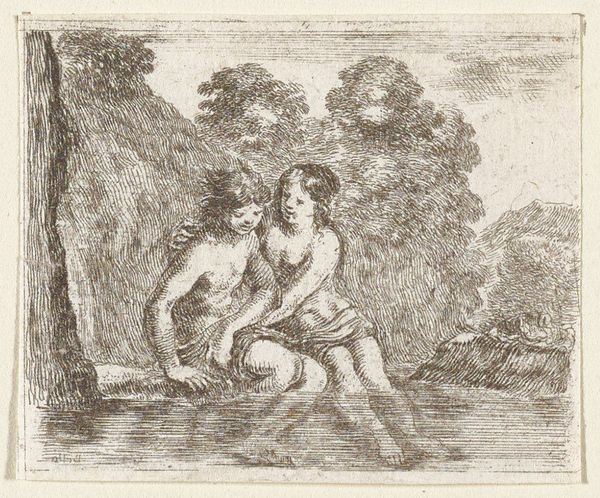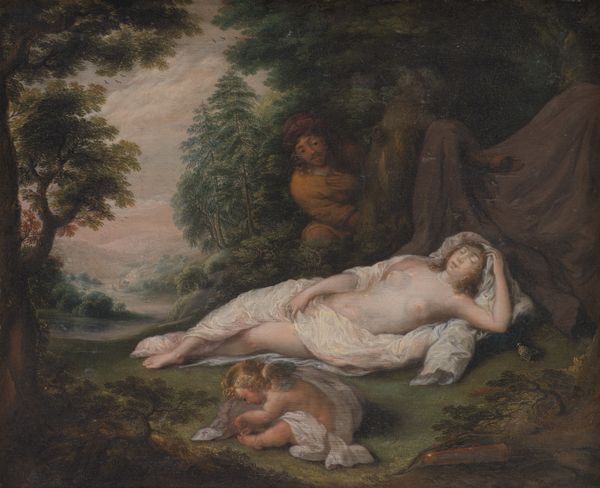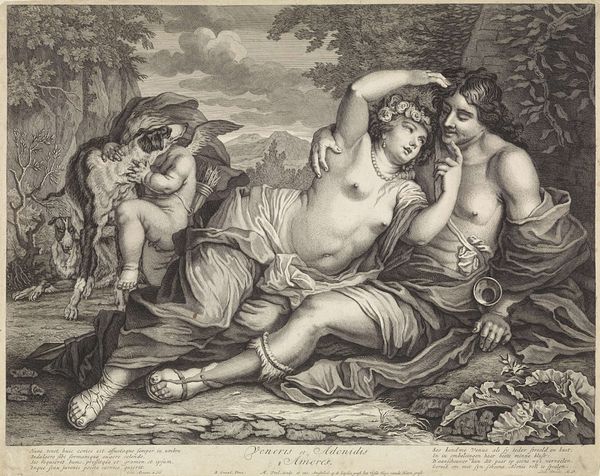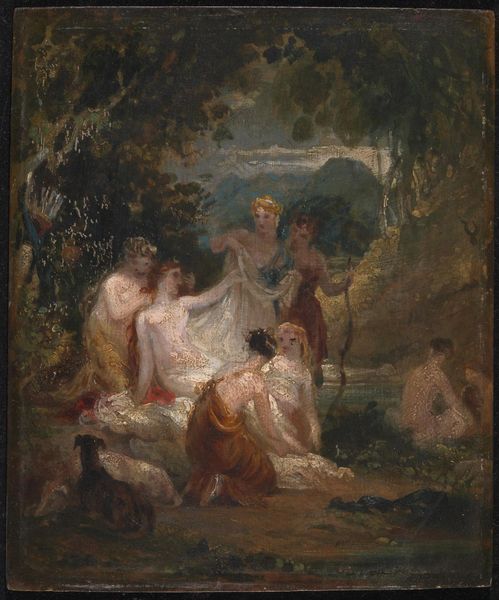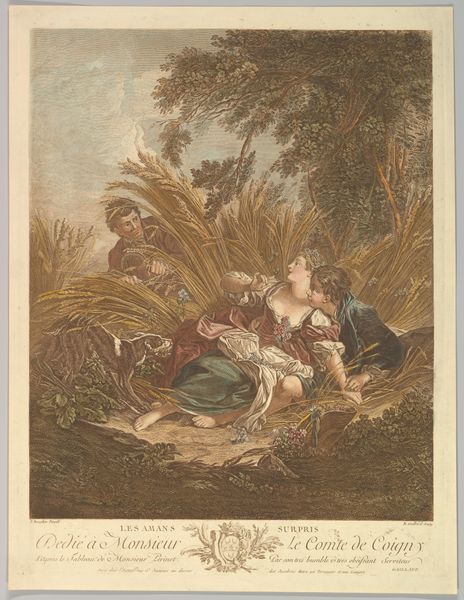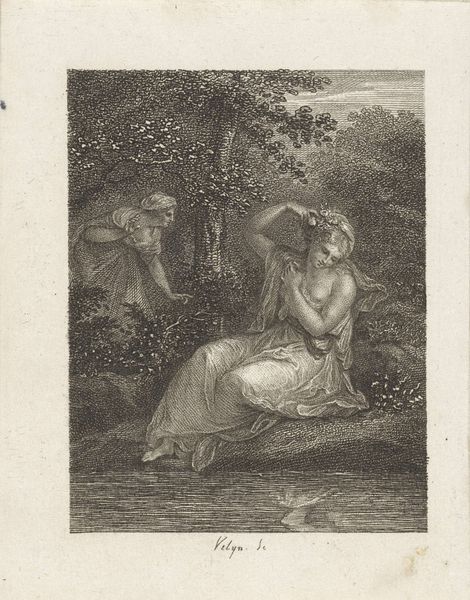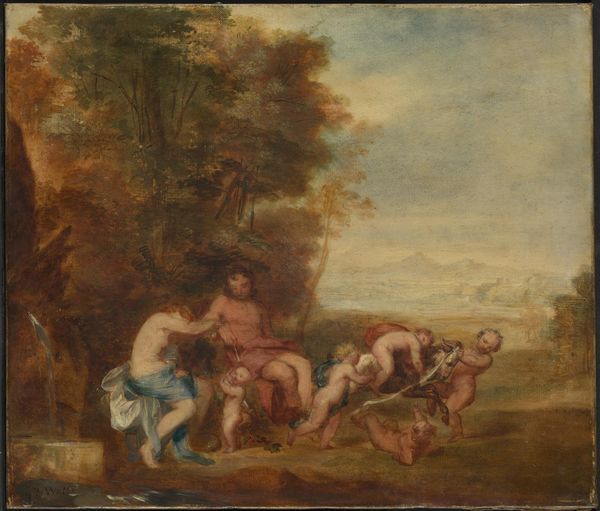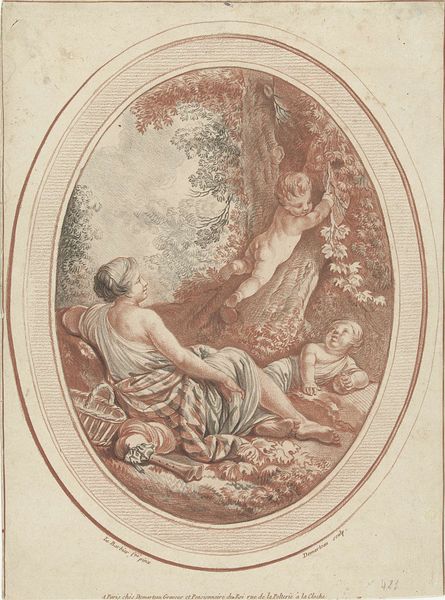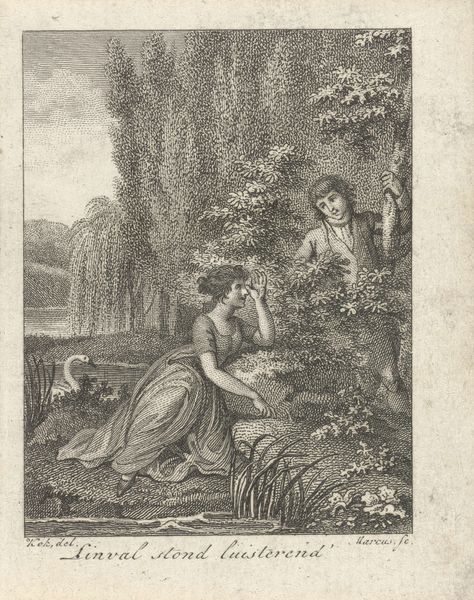
Diana, Goddess of the Hunt, with Satyrs, sleeping Cupid and a Pegasus in a Wooded Landscape
0:00
0:00
watercolor
#
narrative-art
#
landscape
#
figuration
#
watercolor
#
romanticism
#
mythology
#
watercolour illustration
#
watercolor
Copyright: Public Domain: Artvee
Curator: This is Robert Smirke's watercolour entitled, "Diana, Goddess of the Hunt, with Satyrs, sleeping Cupid and a Pegasus in a Wooded Landscape." It depicts a scene rich with classical allusions, characteristic of Romanticism. Editor: The overall tone strikes me as quite melancholic, despite the presence of so many figures typically associated with revelry. There's a definite somber quality, especially with the muted colors and rather languid poses. Curator: That sense of melancholy may stem from the way Smirke uses mythology here. He's not merely illustrating a scene; he’s commenting on societal expectations. Diana, a powerful female figure, is relegated to a landscape, seemingly observing instead of acting. The art market of the time often favored depictions of women in passive, decorative roles, even mythological ones. Editor: Absolutely. And look at Cupid, the god of love, rendered utterly powerless in sleep! He's lost his arrow. Is this a commentary on the futility of love or the temporary nature of passion? It makes one think of those Vanitas paintings, reminders of mortality amidst beauty. Curator: Perhaps Smirke is reflecting on the fleeting nature of classical ideals themselves. Remember that the rise of Romanticism was partly a reaction against the Enlightenment’s emphasis on reason and order. Editor: The choice of symbols becomes increasingly pointed. The satyrs, often associated with untamed nature and hedonism, are lurking almost unseen in the background, observing the sleeping Cupid. Is this a suggestion that unchecked desires can render even love itself powerless? The Pegasus is galloping away…a flight from reason? Curator: The iconography does seem to support that interpretation. Smirke was deeply immersed in the classical tradition. Prints like these allowed for a wide circulation of visual narratives and reinforced classical teachings, though often in a didactic way to reflect society's values. It gave people tangible imagery with which to view morality and politics. Editor: It's interesting to note that the artwork's composition pulls us in separate ways. Diana is drawing water but looking towards the sleeping Cupid; Pegasus seems to run in the other direction; even the landscape itself doesn't unite the narrative elements; the composition scatters and fragments. Curator: Right. While technically skillful, Smirke subverts conventional composition here, emphasizing disarray. Instead of merely celebrating a mythological figure, he seems to use it to underscore cultural tensions. Editor: In the end, I see a scene charged with a strange mix of classical ideals, romantic longing, and perhaps even a touch of disillusionment. The seemingly simple idyllic setting feels remarkably uneasy. Curator: Indeed. It prompts us to question the societal narratives projected onto mythological figures. It’s fascinating how much social context can be unpacked through close attention to symbolism.
Comments
No comments
Be the first to comment and join the conversation on the ultimate creative platform.
